THEN NOW






















These five women enter Nashville’s culinary scene as strong examples for women looking to get into the food business.


An




Contributor Board
Cathy Jennings, Chair Tom Wills, Bruce Doeg, Demetria Kalodimos, Ann Bourland
Linda Bailey
• Amanda Haggard • Tom Wills
• Alvine • Maurice B. • John Jennings •
John H. • Joe Nolan • kyartrat • Jennifer A.
• Harold B. • Vicky B. • Michael “Smiley” G. • Mariela Jara • Ridley Wills II


Cathy Jennings • Tom Wills • Joe First
• Andy Shapiro • Michael Reilly • Ann Bourland • Patti George • Linda Miller •
Deborah Narrigan • John Jennings • Barbara
Womack • Colleen Kelly • Janet Kerwood • Logan Ebel • Christing Doeg • Laura Birdsall
• Nancy Kirkland • Mary Smith • Tev
Byington • Ellen Fletcher • Anna Katherine Hollingsworth • Michael Chavarria • Denny Harris
Will Connelly, Tasha F. Lemley, Steven Samra, and Tom WIlls
Editorials and features in The Contributor are the perspectives of the authors.

Submissions of news, opinion, fiction, art and poetry are welcomed. The Contributor reserves the right to edit any submissions. The Contributor cannot and will not endorse any political candidate.
Submissions may be emailed to: editorial@thecontributor.org
Requests to volunteer, donate, or purchase subscriptions can be emailed to: info@thecontributor.org Please email advertising requests to: advertising@thecontributor.org





Mailing Address
The Contributor P.O. Box 332023, Nashville, TN 37203
Editor’s Office: 615.499.6826 Vendor Office: 615.829.6829
Proud Member of:


Printed at:
Follow The Contributor:
Copyright © 2018 The Contributor, Inc. All rights reserved.
Longtime vendor Dale P. talks about what he wishes people knew about homelessness and selling The Contributor
INSP partner newspaper sheds light on the issue of forced child pregnancy and motherhood in Latin America.Cathy Jennings Executive Director Andrew Krinks Editor Emeritus Contributor Co-Founders


 BY TOM WILLS, CO-FOUNDER
BY TOM WILLS, CO-FOUNDER
The paper you just paid for was bought by someone else first, otherwise it wouldn’t exist. That’s how The Contributor works. A vendor who experienced homelessness paid 50 cents for this paper and then sold it to you. By buying it and taking it with you, you’ve just encouraged that vendor to buy another. BOOM! That’s the solution. Now keep reading. This paper has something to say to you.
Street papers provide income for the homeless and initiate a conversation about homelessness and poverty. In 2007, The Contributor founders met at the Nashville Public Library downtown to form a newspaper. In a strike of lightning we named it The Contributor to convey that our vendors were “contributors to society,” while their customers could contribute to their work. But, thunder from lighting is always delayed … It took three years, but Nashville embraced us like no other city in the world. The Contributor became the largest selling street paper per-capita on the globe. And today 50 percent of our six months or longer tenured vendors have found housing. BOOM! The thunder has struck.
The Contributor is a different kind of nonprofit social enterprise. We don’t serve meals or provide emergency shelter. We don’t hire people in poverty to create products or provide a service. Rather, we sell newspapers to homeless people who work for themselves. We train them to sell those papers to you, keep the money they earn, and buy more when they need to replace their stock.
Our biggest fans don’t always get this. Like lightning without the thunder, they see the humanity of the vendor but misunderstand the model. Case in point: In 2013 during a funding crunch, a representative of one of Nashville’s biggest foundations exclaimed, “I’m such a big fan that I never take the paper!” We responded, “Well, that’s why we are in a funding crunch.” BOOM! Thunder was heard. Taking the paper makes our model work — not taking it breaks it.
And selling the paper twice doesn’t just fund the paper, it funds housing and change. BOOM! Our vendors report their sales to qualify for subsidized housing and even for standard housing deposits and mortgages. They don’t consider your buying the paper a “donation.” It is a sale. When they sell out, they buy more and build the paper trail of a profitable business. Until making these sales, many of our vendors had never experienced the satisfaction of seeing their investment pay off. And when it does, it liberates! They have become “contributors” to their own destiny. And Nashville has become a city of lightning and thunder. BOOM!
Now that you are a SUPPORTER , become an ADVOCATE or a MULTIPLIER You are already a SUPPORTER because you know that taking the paper makes the model work. You bought the paper and you are reading it. Now your vendor is one copy closer to selling out, which is exciting! Now you can become an ADVOCATE when you introduce your friends to your favorite vendor, follow us and share our content on social media, contact us when you witness a vendor in distress or acting out of character, or explain why others should pick up a copy and always take the paper when they support a vendor. And, you can become a MULTIPLIER when you advocate for us AND directly donate to us or become an advertiser or sponsor of The Contributor. Our income stream is made of 50-cent-at-a-time purchases made from our vendors, matched by contributions, ad sales and sponsorships from multipliers like you. Because our vendors are business owners, your donations are seed-money investments in their businesses and multiply in their pockets. Every donated dollar multiplies four-to-seven times as profits in the pockets of our vendors. Thanks for contributing.
El periódico que usted acaba de pagar fue primeramente comprado por alguien mas, de otra manera no existiría. Así es como funciona The Contributor. Un vendedor que está sin hogar pagó 50 centavos por este periódico y después se lo vendió a usted. Al comprarlo y llevarlo con usted, usted animo a este vendedor a comprar otro. BOOM! Esa es la solución. Ahora continúe leyendo. Este periódico tiene algo que decirle. Los periódicos vendidos en la calle proveen ingresos para las personas sin hogar e inicia una conversación sobre lo que es la falta de vivienda y la pobreza. En el 2007, los fundadores de The Contributor se reunieron en una librería pública en Nashville para formar uno. Y como golpe de un rayo, le llamamos The Contributor para dar a entender que nuestros vendedores eran “contribuidores para la sociedad,” mientras que los consumidores podrían contribuir a su trabajo. Pero, el trueno siempre tarda más que el rayo. Nos llevó tres años, pero Nashville nos acogió como ninguna otra ciudad en el mundo. The Contributor se volvió uno de los periódicos de calle más vendido en el globo. Y hoy el 50 por ciento de nuestros seis meses o más de nuestros vendedores titulares han encontrado casa. BOOM! Ha llegado el trueno. The Contributor es una empresa social sin fines de lucro muy diferente. Nosotros no servimos comida or proveemos alojo de emergencia. No contratamos gente en pobreza para crear productos or proveer un servicio. En vez, nosotros vendemos periódicos a las personas sin hogar para que ellos trabajen por ellos mismos. Nosotros los entrenamos como vendedores, ellos se quedan el dinero que se ganan, y ellos pueden comprar más cuando necesiten reabastecer su inventario. Nuestros mas grandes aficionados no entienden esto. Como un rayo sin trueno, ellos ven la humanidad de el vendedor pero no comprenden el modelo. Un ejemplo: En el 2013 durante un evento de recaudación de fondos, uno de los representantes de una de las fundaciones más grandes de Nashville, exclamó: “Soy un gran aficionado, y es por eso que nunca me llevo el periódico.” Al cual nosotros respondimos: “Y es por esa razón por la cual estamos recaudando fondos.” BOOM! Y se escuchó el trueno! El pagar por el periódico y llevárselo hace que nuestro sistema funcione, el no llevarse el periódico rompe nuestro sistema. Y el vender el papel dos veces no da fondos para el periódico, pero da fondos para casas y causa cambio. BOOM! Nuestros vendedores reportan sus ventas para calificar para alojamiento subvencionado y hasta para una casa regular, depósitos e hipotecas. Ellos no consideran el que usted compre el periódico como una “contribución” pero más lo consideran como una venta. Cuando se les acaba, ellos compran mas y asi logran establecer un negocio rentable. Hasta que lograron hacer estas ventas, muchos de nuestros vendedores nunca habían experimentado el placer de ver una inversión generar ganancias. Y cuando logran hacer esto, da un sentido de Liberación! Ellos se han vuelto contribuidores de su propio destino, y Nashville la ciudad de el trueno y el rayo. BOOM!
BY JOHN JENNINGSAhora que te has vuelto nuestro SEGUIDOR, vuelve te en un ABOGADO o un MULTIPLICADOR. Ya eres nuestro SEGUIDOR, porque sabes que al llevarte este periódico sabes que esto hace que nuestro modelo funcione. Compraste el papel y lo estas leyendo. Ahora nuestro vendedor está a una copia más cerca de venderlos todos. Que emoción!
Ahora que te has vuelto nuestro ABOGADO cuando presentes a tus amigos a tu vendedor favorito, siguenos y comparte nuestro contenido en social media, contactanos cuando seas testigo de un vendedor actuando de manera extraña o fuera de carácter. O explicale a tus amigos porque ellos deben de llevarse el periódico cuando ayuden a un vendedor.
Te puedes volver un MULTIPLICADOR cuando abogues por nosotros, Y directamente dones a nosotros o te vuelvas un anunciador o patrocinador de The Contributor. Nuestra fuente de ingresos consiste en ventas de 50 centavos hechas por nuestros vendedores, igualadas por contribuciones, venta de anuncios, y patrocinios de multiplicadores como usted. Porque nuestros vendedores son dueños de negocios, las donaciones que den son dinero que es invertido y multiplicado en sus bolsas. Cada dólar donado se multiplica de cuatro a siete veces en la bolsa de nuestros vendedores.


Gracias por Contribuir.

The morning of March 5 the community came together to celebrate The Contributor ’s vendors and learn more about our reinvigorated newspaper at the organization's annual fundraising breakfast.
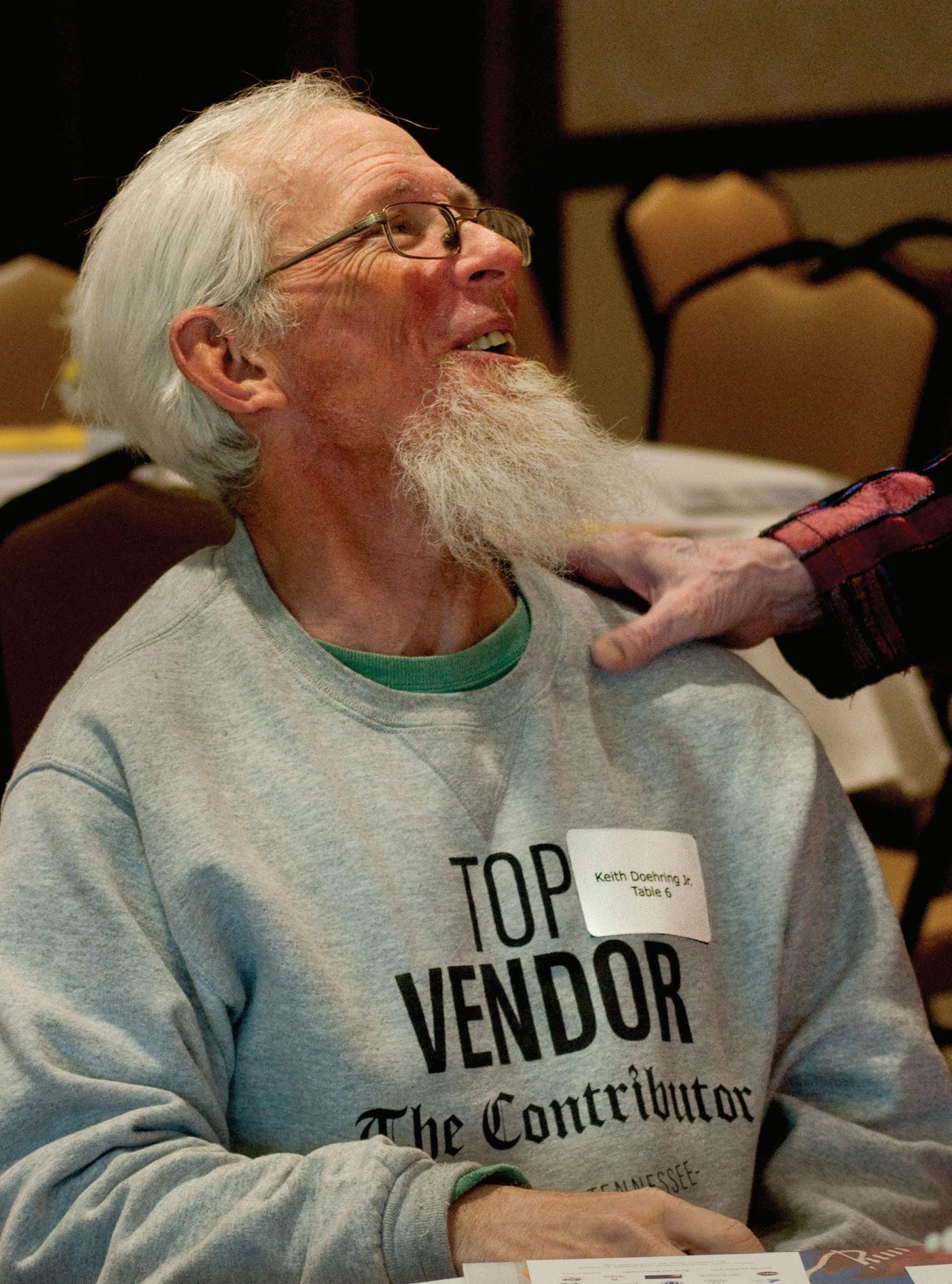



Mayor David Briley, vendor Mario, board member Demetria Kalodimos, founder Tom Wills and executive director
Cathy Jennings took the stage to educate the audience and show them exactly how the organization is turning around.
Briley spoke about the city’s need to address homelessness in its many facets. He was followed by an emotional speech from a longtime Contributor vendor Mario.
“Before I started working at The Contributor, I had lost
hope and fell on hard times,” said Mario. “All I had was four dogs and a pickup truck. And we lived in that truck for weeks until someone let me live in their barn. I took what was left of my pride and I set it aside and I sold The Contributor newspaper… The paper, and my customers, they gave me a stepping stone.”
One day as I was going about my daily routine, I ran across a guy that told me about an old fashioned fish fry that occurs on the corner of Dickerson & Cleveland on Fridays. I went by just to check it out, and when I got there I noticed an emblem over a Red Door. It was the same emblem from a T-shirt I got from a guy named Roy who had purchased a Contributor from me in 2016. One of the elder guys told me that the fish fry was a fundraiser for the Neighborhood Hopes Youth Boxing Gym. It’s a gym that hosts sparring matches and boxing tournaments for Nashville youth. I looked into the whites of its three wonderful coaches — Roy Bohannon, Mr. Charles Edwards Walsh, and Calton Sparrow — and saw the desire they have to pour their lifetime of Olympic and professional experiences and discipline
by nurturing male and female youth ages seven and up. Yes, these kids are learning the basics of boxing but it also instills in them firm discipline and self-defense.

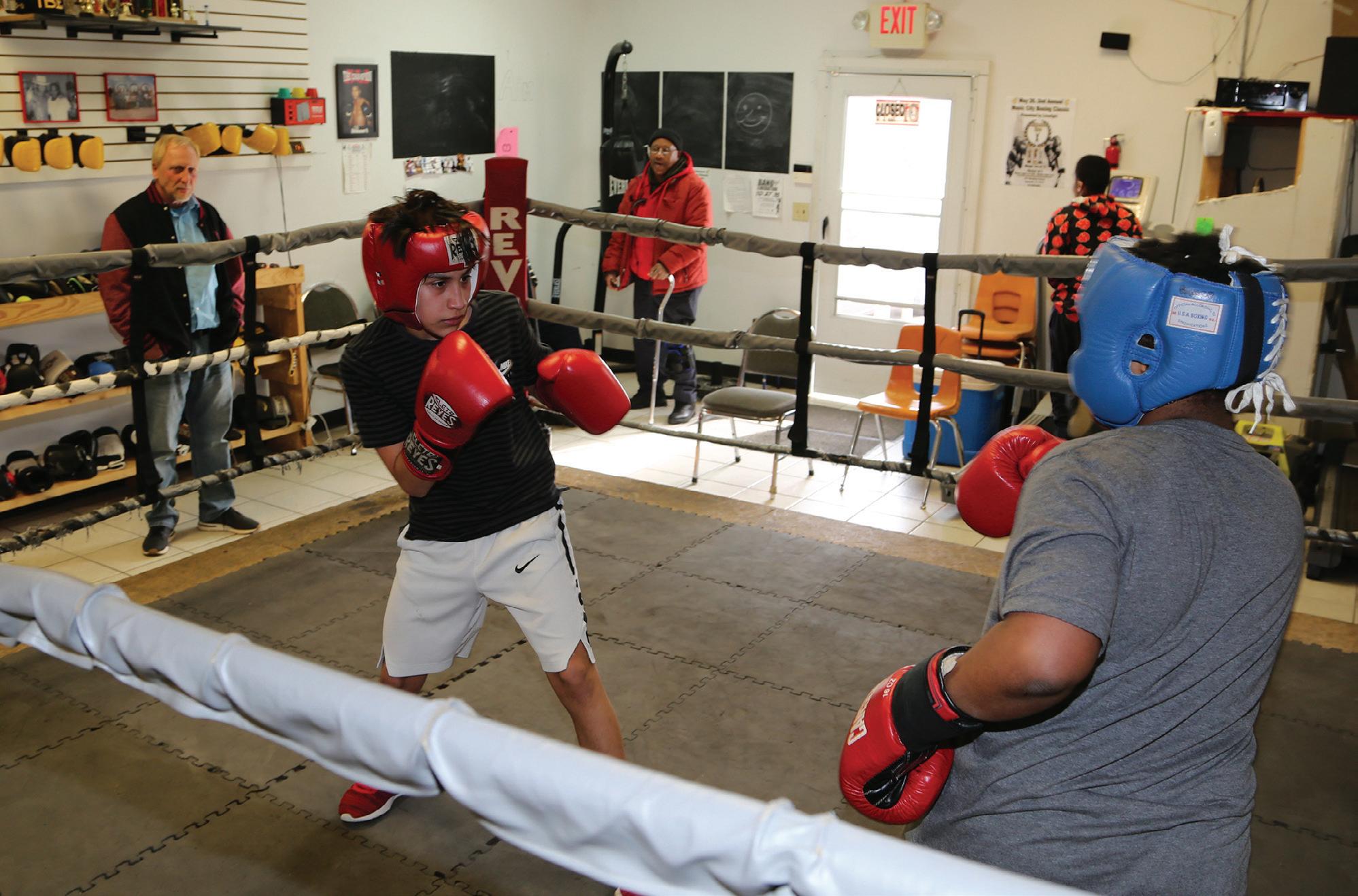
While I was in the gym, I noticed they bring about a true and very sturdy standard of teamwork. The coaches come from different backgrounds. Being a part of the gym, the youths choose to reach for higher marks in life starting with grades, and moving into their self-realization that the honest love and respect they receive from one another in the gym is more important than the troubles in or out of schools.
When they are competing either in the gym and or on the road, they show the mental and physical growth they have received by being dedicated to training and mastering techniques.
As they face off in the ring, they execute their boxing and discipline
skills. After a match they hug and congratulate one another. These actions are really needed back in this world.
Outside the ring, they learn communication and self-disciplinary skills. They are building positive futures. This is the best investment we can make in our youth today. It’s not just some workout class. These kids are setting goals, learning positive outlets to release youthful energy, and learning healthy eating and exercise practices in a safe environment, even becoming positive role models to other youth.
Neighborhood Hopes' coaches are committed to the athlete's overall development. They have monthly speakers that talk about various life topics, and they organize monthly field trips that unite the youth as team participants. In the gym, they have a wall known as the "Champion of the Month" where they
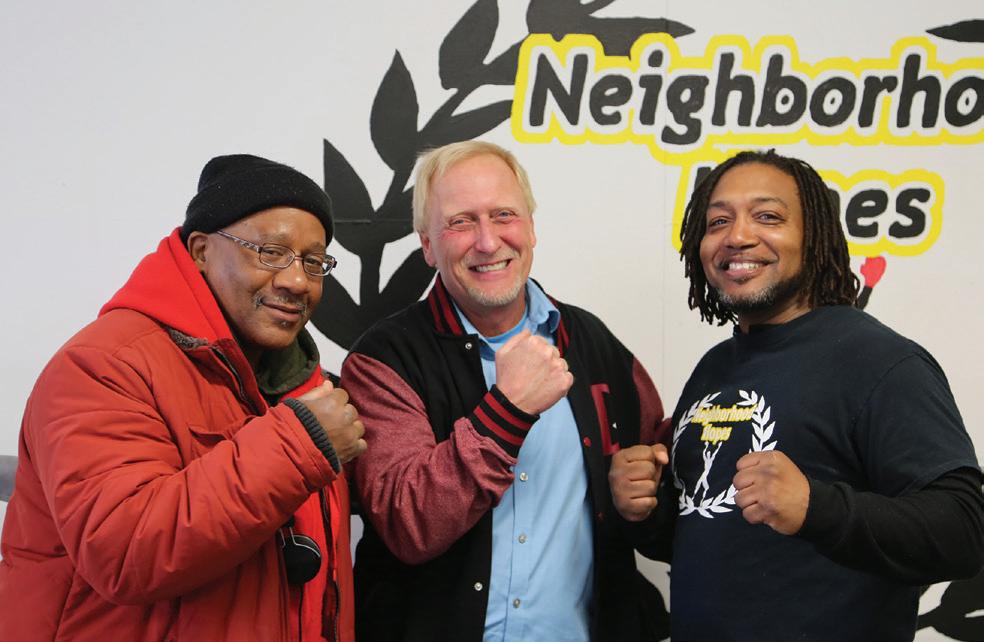
recognize deserving youth for their accomplishments. Who knows, one day "Music City" just might turn out the next world champion boxer coming from Neighborhood Hopes Youth Boxing Gym, where it's all about nurturing youth and understanding that they have frustrations, but can learn to channel that frustration into bettering and brightening their futures. It’s truly worth being a part of.
The owner and head coach Roy Bohannon started boxing at the age of 8 years old and has been able to win a large number of tournaments all the way up to the Olympics. In 1996 he decided to turn professional and he respectfully ended his career with a record of 13-4 & 7 KO's. Johhny Toccos sparred with just about everyone from the minors to Mike Tyson. Mr. Charles Edwards Walsh sees giving back to the youth as being his life-long dream.
Every place you go basically has rules: the workplace, school, church — even a ballgame. God’s word also has rules and commandments that we should abide by. But what about places that have bad rules? Rules that make us mistreat our neighbor, rules that are totally the
opposite of God’s word? Being a Christian, we must be very careful of our actions. We will be held accountable on judgment day for our actions, for our bad rules and for bad attitudes that we demonstrate toward our neighbor. Many think that if they do these things to
the poor it’ll go unnoticed. Don’t be fooled, these actions will haunt you in the future.
In the world we stay in today, many workplaces have bad rules. I’ve seen it many times, and I make my stay very short especially in places where you see God’s word advertised, but the attitudes of the employees and associates have a very sinful nature. It makes you nervous. I guess the biggest problem I have is knowing God’s word. Should I follow the rules of the world or should I follow God? God says in his word, “Obey your Master.” I think many of us Americans get it confused. Sure-
ly God wouldn’t ask you to obey sin, so why do we? I’ve missed out on many great opportunities just because I ended my stay quick because when I enter a place of this sort, I move on. I hate being approached about something that’s sinful, or if I have to mistreat someone because of your rule. Christians shouldn’t be this way. Yet I see many who claim to be a Christian abide by these rules. Take my advice, learn God’s word, stop while you have a chance, these things can cause you to spend eternity with Satan. Never take God’s word for granted over the rules of the world.
More and more women-owned businesses enter Nashville’s culinary scene; these five women are strong examples for women looking to get into the food business.


Schneider is not only the founder of digital firms Hannah Schneider Creative and BRND House, she also recently opened East Nashville's Kettner Coffee Supply. The new project is a playful coffee shop that serves the growing East Nashville community. Schneider continues to be involved in daily operations and handles the social media and public relations of the shop.

Nicky’s Coal Fired, one of the most popular Italian restaurants in the city, sparked development in the West Nashville community, and Galzin co-owns the spot with her husband, Tony Galzin. While Tony is responsible for developing the menu, Caroline runs the front of house and works as the business manager.
Morales, Chief
Officer of
Hospitality, has spent her entire life in the hospitality industry, working alongside her family on a multitude of projects like The Southern Steak & Oyster, Acme Feed & Seed and Loveless Café. Hospitality is in Morales’s DNA, managing everything from operations to financial details of the restaurants.

After
-
East Nashville residents, Katie MacLachlan and Robyn Donnelly, saw a void in the area’s market for well-crafted and affordable cocktails and a community gathering place. They teamed up to create Walden, founded in 2018, capitalizing on MacLachlan’s design experience and Donnelly’s hospitality experience.


TO CELEBRATE THE CONTRIBUTIONS OF WOMEN THROUGHOUT HISTORY AND WITHIN OUR NASHVILLE COMMUNITY, LYFT IS PROVIDING FREE RIDES UP TO $10 DURING WOMEN’S HISTORY MONTH TO A FEW WOMENOWNED BUSINESSES. RIDERS IN NASHVILLE CAN VISIT THE SPOTS BELOW BY USING THE CODE WHMBNA19:
JACKALOPE BREWING COMPANY HENRIETTA RED VINNIE LOUISE FRISSON SOFT SERVE GELATOIn celebration of International Women’s Day, restaurant booking website OpenTable teamed up with the James Beard Foundation to showcase some of the world’s best restaurants on OpenTable that are run by women. According to OpenTable: “Some are James Beard Award-winners, nominees and semifinalists, others are trailblazing entrepreneurs whose reputations precede them.” The list (descriptions courtesy of OpenTable) includes:
Henrietta Red | Germantown’s Henrietta Red is the brainchild of Nashville-born Julia Sullivan. This talented chef graduated from the Culinary Institute of America in New York and has worked at eateries like Blue Hill and Franny’s, to name just a couple of the top restaurants on her resume. Named after Sullivan’s grandparents, Henrietta Red offers seasonal fare including a raw bar. There’s a wide range of different types of oysters and clams, plus heartier dishes like braised lamb with polenta.
Etch | Deb Paquette isn’t just an accomplished chef here in Nashville, she’s also inspired and empowered many other women in the food business, such as Kim Totzke, COO of Provence Breads. She’s optimistic about the future of women in professional kitchens. Her own kitchen at Etch is her creative outlet, allowing her to experiment with new developments in the realm of cooking. Some menu highlights at Etch include tempura tofu, veal meatballs, or scallops in forbidden rice — all encapsulated at the perfect space with an elegant, yet inviting atmosphere.
Miel | Look out for proud restaurant owner Seema Prasad greeting guests with a smile at Sylvan Park’s Miel. Seema has run restaurants across Washington and Seattle, and has two decades of experience in the world of wine, which makes the wine list at Miel one of the best in town. Seema has a big focus on conscious business, partnering with local green companies like Compost Nashville and Green Village. These locally and ethically-sourced ingredients find their way into dishes like crispy potatoes with bone marrow and miatake mushroom risotto.
Chauhan Ale & Masala House | Chef and co-owner Maneet Chauhan is truly a celebrity — snagging a gig as a judge on popular food show Chopped and making a guest appearance on Next Iron Chef. She’s also worked at top eateries in Chicago and New York. Nation’s Restaurant News named her one of the most influential people in the restaurant business. Her menu of global fusion cuisine is deeply rooted in India, with specialties like Goan mussels and Peshwari ribs. Keep your eyes peeled for unique cross-cuisinal touches like the Chicken Pakora Po Boy.
Sinema | Brenda Reed is one of the owners of Sinema, a classic American restaurant housed in the historic Melrose Theater. The entire concept aims to keep the atmosphere and ambiance of the movie theater alive, through the architecture and décor. Dinner choices range from short rib to stroganoff, while the brunch menu offers omelets, French toast, and bottomless bloody marys. In addition to the work she puts in at Sinema, Brenda gives a lot of time and energy to the Food Project, helping to feed over 1,000 homeless or poverty-stricken people every week.

Gaspar Noé might have the most infamous filmography of any contemporary director. The French filmmaker’s Irreversible (2002) includes graphic violence and a brutal rape scene, and Enter the Void (2009) depicts a dead drug dealer’s disembodied soul floating in a hallucinatory, neon Tokyo-scape inspired by the filmmaker’s experiments with psychedelic drugs. Noé’s last film, Love (2015), featured real sex (not acting) and was released in 3D. Now Noé brings us Climax with less sex than Love, less violence than Irreversible, and less crazy visuals than Enter the Void, but more dancing than all three of those films combined.
Climax starts out as a movie about dance and dancers with a number of hopeful hoofers seen on a camera monitor being interviewed about joining a troupe that will tour America. For the most part these question-and-answer scenes seem pretty matter-of-fact and they’re a ready-made device for introducing the audience to each character in the ensemble. But some of the questions the dancers are asked seem oddly personal, seemingly pushing the dancers to agree that they’ll do anything for the opportunity of joining the troupe. There’s an ominous feeling that they’re getting in over their heads before the scene shifts to an abandoned school building in the French countryside on a freezing
cold winter night. The troupe is living in the former school while they prepare for their premiere performance. The troupe finishes rehearsing a new number before breaking to enjoy a party together. Also, somebody spiked the sangria with high-grade LSD.
The highlight of Climax is the energized and eccentric dance performances that dominate its first act. Noé shoots the dancers’ rehearsal with long, lingering shots that sometimes find the dancers looking right at the camera, seeming to perform for the movie theater audience. Virtuoso cinematographer Benoit Debie with Noé himself behind the camera lights the scene. The pair captures these truly thrilling displays of solo and ensemble dance with imaginative camera movements and inspired shots from above the dancers that transform moving bodies, costumes and props into energized abstractions of color, energy and rhythm. Climax may be the most imaginative display of dance
on film since Wim Wenders’ Pina (2011).
That said, Climax is a Gaspar Noé film and once the better part of the dancing is over the director is in a hurry to replace choreography with a shapeless chaos brimming with sex, violence and madness. After the spiked sangria kicks-in and the dancers realize they’ve been unwittingly drugged with an unknown substance, things get very paranoid and extremely dangerous very quickly. Noé’s films often make me feel that the director enjoys forcing his audiences to endure his films, and the second act of Climax feels exactly like the bad trip you can’t wait to end. I’d totally understand people walking out on this murder, suicide, incest, hair burning, baby kicking, and random public sex section of the movie. That said, much of the inspired free-floating camera work here also reminded me why Noé is so highly regarded despite his always controversial subject matter.

Noé is a poetic, visionary director, but he’s never been a strong storyteller. Many of his films — including Climax — are presented in non-linear sequences that shed the bur-


den of familiar timelines as quickly as they disrespect agreed-upon assumptions about story structure, characterization, and performance. My favorite interpretation of Climax is that it’s all a government experiment: the weird interview, the isolated location, the looming French Tricolour in the dance space, the unexplained arrival of militarized police at dawn, and the revelation of the sangria-spiker all support a conspiracy interpretation. But Climax isn’t interested in interpretations, it’s concerned with jarring and janky and gyrating and juicy sensations. It’s a real trip, but you might want to hire a sitter.
Climax opens at the Belcourt on Friday, March 15. Go to www.belcourt.org for times and tickets.

GASPAR NOÉ’S 'CLIMAX' IS THE BEST BAD TRIP MOVIE EVER
In the fall of 1886, some members of John Overton’s family and their neighbor, Van Leer Kirkman, bought about 10 Standard breed trotting horses at the dispersal sale of the famous Glenview Stud in Louisville, Ky. After returning to Nashville, they put the horses and others they owned on a stud farm they named Hermitage Stud after Andrew Jackson’s home. The stud farm was established in 1887. The syndicate consisted of Van Leer Kirkman, president; John Thompson, secretary-treasurer; May Overton, manager; and Jesse M. and Robert L. Overton, members. Robert had taken the place of his brother-in-law, Hugh Craighead. All of the land for the stud, about 1,400 acres in all, was owned by Col. John Overton or his children: Elizabeth Overton, Jesse M. Overton, Mary McConnell “Conn” Thompson, May Overton, and Robert L. Overton. Conn lived at neighboring Glen Leven Farm with her husband, John Thompson, and their children. Kirkman lived at Oak Hill, property he had bought from Colonel Overton, while May, Robert, Jesse and Elizabeth lived with their father at Traveller’s Rest. All but one of the buildings and the training track at the Hermitage Stud were on Overton land west of Frank-

lin Pike, mostly on the 175 acres Col. Thompson left to Conn. Her portion ran from present-day Curtiswood Lane on the north to Oak Hill on the south, and to a creek at the “Snowden Place” on the west. The training track ran north and south near the turnpike. In the 1980s, you could still see the curve of the northern end of the track in the backyard of a home facing Harding Place a few hundred yards from Franklin Pike. A portion of the curve at the southern end is still visible from Franklin Pike. About 100 yards from the northern end of the track there was a 24-stall training stable. In the southwest corner, there was a circular colt stable. Most of the brood mares, usually 60 or more, were pastured in a field on the James E. Caldwell Place on the west side of Franklin Pike, about a mile or slightly more north. Their stable was across the pike in the Elysian Fields track then owned by May Overton.
A month after buying the 10 trotting horses in Kentucky, May Overton, representing the syndicate, paid John S. Clark $25,000 for the famous Wedgewood, a champion trotter that earned the nickname “The Iron Horse.” His short
racing career lasted from 1879 through 1881. In 1880, he won every race in his class in the Grand Circuit. When the Cumberland Fair and Racing Association’s park opened in October 1891, the road connecting the new racecourse with the Franklin Pike was named Wedgewood in honor of the great horse. Cumberland Driving Park lasted until 1906 when an anti-gambling law killed horse racing in Tennessee. That same year, the track became the State Fair Grounds.
The Hermitage Stud weathered the 1893 depression only to close May 24, 1898 with a dispersal sale of what was advertised as the “Grandest Stud of Trotting Horse Ever in Tennessee.” Part of the problem was lack of money and another part was disagreements between the partners.
By 1910, Battery Lane had been cut though the old Hermitage Stud racecourse. In 1916-17, the circular colt barn burned after being used since 1898 primarily as a cow barn.
Part of the training stable was used by John and Conn Thompson to stable a saddle horse and a pony or two. The Hermitage Stud office, a square, one-room building, still stands in the backyard of a home in the neighborhood.

It’s been more than 40 years since Loretta Lynn released “The Pill” — a controversial song bemoaning a life comprised of birthing and raising children and singing praise for birth control.
The song was banned from many country radio stations, but it continued to be popular among fans despite the stations’ reluctance to spin it. It became a national story: A line in an Associated Press story writing: “To some, Loretta Lynn’s new song ‘The Pill’ might be
too bitter to swallow. But to the country music star it has the sweet taste of success.”
Lynn had already been on the music scene more than a decade when the song was released, but its popularity was about much more than that. Working-class women all over the country could identify with the song’s lyrics: “All these years I've stayed at home/While you had all your fun/And every year that's gone by/Another baby's come/There's a gonna be some changes made/Right here on nursery hill/You've set this chicken your last time/'Cause now I've got the pill.” It turns out she didn’t need the airplay to sell the single.
The song was about liberation, about women making their own choices. Lynn herself got married at 13 years old and had six children before she released “The Pill” in 1975. And she didn’t play coy about
whether she identified personally with the song: She did feel the words in her song, she told reporters at the time, and even said if she’d known about birth control earlier, she likely wouldn’t have had so many children.
“If they’d had the pill a little earlier,” Lynn said. “I think I’d have eaten ‘em like popcorn.”
All these years later — as we’re all well aware — Lynn remains a success: Despite some health issues in previous years, Lynn still remains active in the country music scene. She’ll be celebrating her 87th birthday with a huge all-star tribute show at Bridgestone Arena on April 1.
While Lynn won’t be performing at the show, it includes a bevy of artists, including: Kacey Musgraves, Margo Price, Jack White, Brandy Clark, Garth Brooks, Trisha Yearwood, George Strait, Pistol Annies, Miranda Lambert, Alan Jackson, Little Big

Town, Darius Rucker, Martina McBride and Keith Urban — all of whom could claim some influence from Lynn. (The show is sold out, but keep an eye out for folks trying to get rid of their tickets last minute. It’ll definitely be a show for the record books.) In advance of the show, Price chatted with The Contributor about Lynn’s legacy, country music and the difficulties facing women involved in the music industry.
“I’m really excited about playing the Loretta tribute, she’s been such a pioneer, especially when talking about birth control,” says Price.
Price’s up-and-coming career draws some parallels with Lynn’s, particularly when it comes to radio play. Price says that while there’s a huge space that women are not occupying on the radio, she addresses the lack of play as something much more to do with subject matter, with songs that
“WOMEN WITH OPINIONS ARE DEFINITELY KIND OF SHUT OUT OF CERTAIN CIRCLES IN THIS INDUSTRY." - MARGO PRICE
are either outright political or have political undertones. It’s obviously harder for women, she says, so it’s compounded when a woman releases music with a message.
Price’s second album All-American Made includes a song about women getting paid less for the same amount of work, called “Pay Gap,” and her first album Midwest Farmer's Daughter includes songs like “This Town Gets Around,” which calls out the country music industry for its many misdeeds.
“Those things are going to be kept off the radio regardless of your gender — so if you’re a women and you have songs that are not pop songs about love and money and whatever, you’re going to really have a hard time fighting to get your voice heard,” Price says. “Sturgill Simpson, Tyler Childers — those guys don’t get played on the radio either. Obviously they have a huge fan base and
there’s no reason they shouldn’t be played.”
Price says she’s fine with not having the radio play because she doesn’t really think the people who like to play Top 40 bro country is really the space for her.
Local station WMOT out of Murfreesboro plays Price often, but they’re more likely to play roots and Americana music — not to mention the station is run by women. Part of the reason it took Price so long to break out is that she was unwilling to compromise herself to sell records.
“I mean, I felt it more during the second record, but definitely there were people at radio stations and people at CMAs — that’s just not the kind of message they want to promote. [Record companies] want something that’s glossy, that doesn’t touch on any issue like gender equality or a living wage,” Price says. “I felt that from the very beginning, that
I wasn’t going to fit into the mold and that I wasn’t going to be objectified. They have always just wanted women to be sex objects, and that’s never what I had set out to do.”
While Price agrees that “Women with opinions are definitely kind of shut out of certain circles in this industry,” she says it’s become more fashionable in recent years to voice opinions — and definitely easier to become and remain successful while producing controversial music than when Lynn was coming up.

“For a while, I thought there was this revolution going on and that good music was going to be championed more, but while I think that some people are appreciating actual songwriting and that maybe people that are appreciating music that’s more rough around the edges and outside of the box, there’s still such a
monopoly from major labels,” Price says. With the advent of social media, artists now have a more direct opportunity to make their positions on major issues known. Undoubtedly artists like Lynn could get a message out to media or at shows, but modern artists often have more of a chance to explain their work or speak out about issues. Price often uses her social media accounts to champion various causes.
“I like it to be in my wording, I don’t want anyone else speaking for me,” Price says. “I think there’s something to be said about having your own voice and saying things the way you want them to be said. But obviously it’s time consuming and honestly a little draining.”
It comes with downsides, of course: You have the chance to say what you think, but often that can come with a deluge of comments
"I THINK LORETTA WAS REALLY, REALLY BRAVE AND SHE DEFINITELY
or messages disagreeing with your position or even harassment.
“I do try to not let other people’s comments get to me,” Price says. “A few weeks ago someone got mad that I liked something, and they didn’t think it was appropriate and all these people starting attacking me and talking about how ugly I was and how I needed a nose job. Those things really can hurt you. But I’ve grown a thick skin in the past three years, that’s for damn sure.”
She’s been particularly struck by how people continue to support men like R. Kelly, Michael Jackson and Ryan Adams after compelling testimonials from survivors of alleged assaults. She’s seen on social media how quickly some people have jumped to defend artists.
“It’s important to believe survivors whether they’re female or male…” Price says. “Fame and money will blind people into looking the other way. It’s just really unsettling.”
More close to home, Price worked with Adams briefly.
Price played a few shows with him earlier on in her career. Adams was recently accused of extremely manipulative and abusive behavior toward female musicians and alleged to have exchanged sexual texts with a 13-year-old girl.

“I do think that he got what was coming to him,” Price says. “I've heard for years from different women that he was kind of manipulative… He did try and turn me against one of his ex-girlfriends by saying that she was saying bad things about me and that she was jealous that he was touring with me. I just, I think that for him to be messaging a 13-year-old girl is pretty disgusting and I’m really proud of the radio stations that have pulled his music.”
But she’s encouraged that the tide does seem to be turning against behavior that used to be considered less scandalous: In rock history, male musicians have often used their power to take advantage of younger girls.
“People are finally starting to take no -
tice, that’s the good thing about it,” Price says.
Forty years ago, stations were pulling Lynn’s music for lyrics that empowered women to make their own choices about their reproductive health. Today, they might not be much better about playing music at an equal rate to that of men. But some are becoming better at pulling music by women from men who’ve behaved badly.
All those years ago, Lynn stood up for something she knew her audience would get behind. It clearly didn’t matter to her whether a radio station didn’t want to play a song she felt strongly about. It might not be a cakewalk for Price to do the same, but a way was paved long ago for women who want to speak their minds in the country music industry.
“I think Loretta was really, really brave and she definitely inspired me to speak what was on my mind,” Price says. “I’m honored I get to do it.”
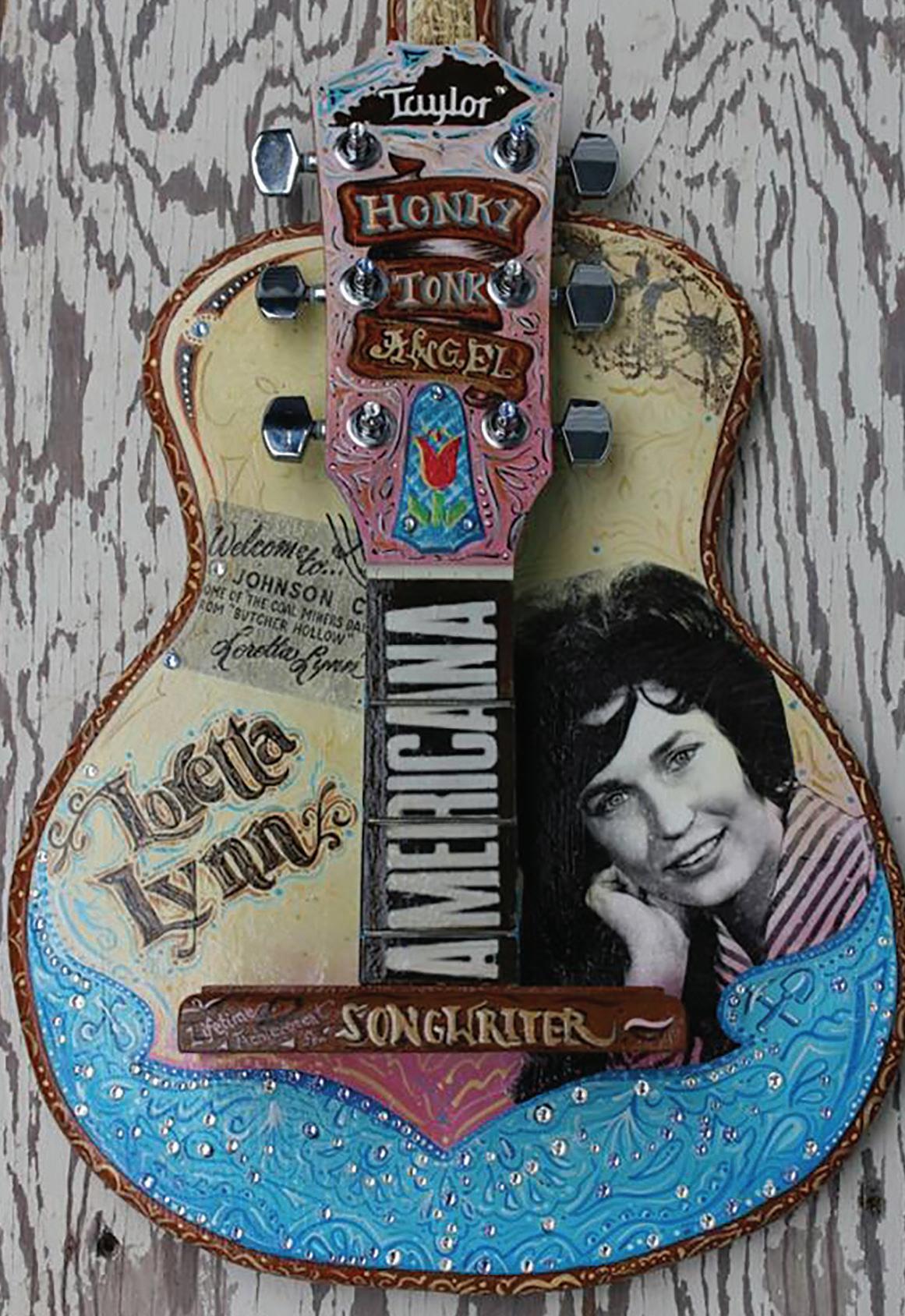
“I FELT THAT FROM THE VERY BEGINNING, THAT I WASN’T GOING TO FIT INTO THE MOLD AND THAT I WASN’T GOING TO BE OBJECTIFIED. THEY HAVE ALWAYS JUST WANTED WOMEN TO BE SEX OBJECTS, AND THAT’S NEVER WHAT I HAD SET OUT TO DO.”These guitars were presented to Loretta Lynn and Margo Price to go along with awards they won at Americana Award ceremonies. PHOTO BY KYARTRAT.

 JESS F.
JESS F.
All this rain little to no sunshine is gonna stop this face from smiling. Life is too short to worry about time or if heaven has your number and is dialing.
I was a stranger to him, but he's my new friend asked if I could be anyone who might that be Not something made up or pretend these are the many facets to me.
I'm a miracle, a sight to see, the lone ranger I'm a rose, handle me carefully with my thorns. I'm a road to recovery, I'm a past with unspeakable danger. I'm a flag that's been tattered and torn.


He’s got the whole world in his hands and sometimes one of us pops through the crack at the bottom of his cupped hands because of a gigantic tickle fight which we did not start and over which we have absolutely no control. But instead of tumbling down below, we float in free fall like an astronaut detached from the mother ship until He catches us in his loving gaze and wills us back into the fold.
Everything is cracked.
It’s how the light gets in. You heal me with your light and possess the loving gaze of God. Thank you for your kindness.
We've read the stories, the poems and seen the artwork, but what's it really like being homeless? The very fi rst time I was published in The Contributor I had written a poem called “Being Homeless.” It was about all the things I've learned about being homeless. Taking what I've learned about living in a PT Cruiser, to living in a hotel, to (now) living in an RV, I’m going to describe some things I've learned from being homeless.
Across the seven seas only you and me to distant shores we shall flee shutting out the roar of the world above its calamities we will soar far away places where few have been where no footprints disturb the sand where breakers fall gently on the beach no sounds, so peacefully out of reach
I know, in our hearts, these are only dreams flowing on hopeful streams but alas we still believe on falling stars and glowing fingers, from moon beams
ARTWORK BY JENNIFER A.Looking straight ahead moving at a decent pace not being in a hurry we've found the right place.
Everybody's a little tired nothing's wrong with that it's breaktime everybody roll out the welcome mat.
I’ve been a single parent of twins (my best accomplishment yet), I’ve bounced from job to job, and I always lived on the borderline of being homeless for the last four years. Learning what we need and what we want is thought over carefully when any money comes our way. It takes me back to the days of having a home and having the choice of paying the electric bill or buying diapers. Diapers always won. I didn't know about outreach programs and assistance back then. Being a minister's daughter, I only remember a few times when the subject even came up. I wasn't born with a silver spoon in my hand, but it wasn't a homeless situation either.
I am educated more by the streets than by the books. Learning what you can live without has been a rule we practice on a daily basis with a home on wheels. Being a part of a community is a great way to learn from others in the same situation. How do they get by on a dime and how we can apply that to our situation? Homelessness in our current community (a parking lot) is a lot different than a hotel or tent community. My anger comes through sometimes, though I really work hard at not showing it especially when I'm trying to sell the newspaper and no one is buying it.
Being homeless is making the best of what you have and using what you have to make it day by day until you fi nd housing. Being homeless is learning to live without: without a home, without food, and without those things that people often say they "can't live without.” I hear that and sometimes chuckle under my breath, “You could if you had to.” Being homeless is working really hard and making small strides. Being homeless is knowing the value of that dollar bill a stranger gave you and the $5 bill another stranger digs for while the light turns green. Being homeless is different to everyone with defi nitions just as different. Being homeless still sucks, but today it sucks a bit less.

YOU'RE HOLDING THE 300TH EDITION OF THE CONTRIBUTOR NEWSPAPER. WHEN OUR FIRST EDITION HIT THE STREETS AT THE END OF 2007, WE HAD NO IDEA WE'D REACH 300 EDITIONS IN JUST OVER 12 YEARS. WE'RE SO GRATEFUL FOR ALL THE PEOPLE WHO HAVE SUPPORTED US ALONG THE WAY AND FOR ALL THE VENDORS WHO HAVE JOINED US THROUGH THE YEARS.

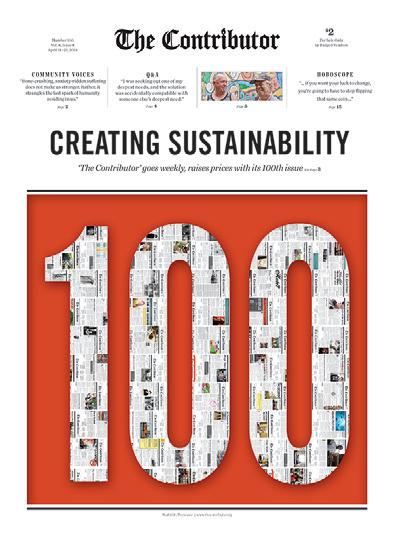

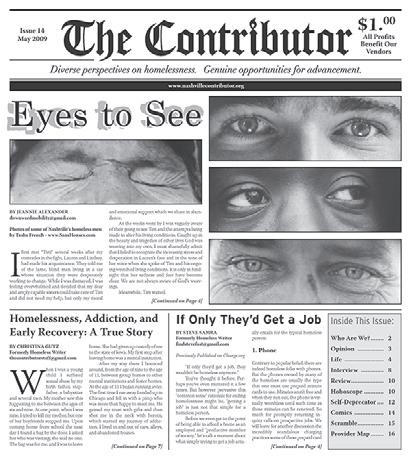










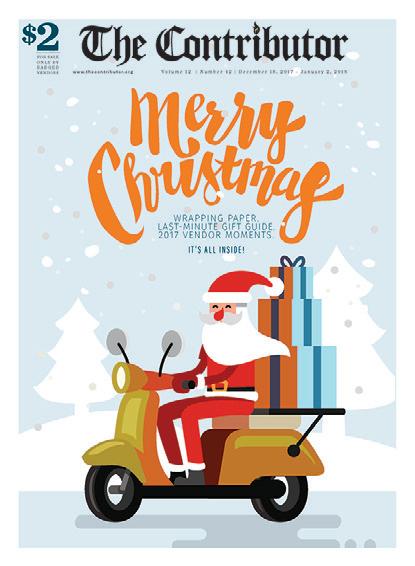


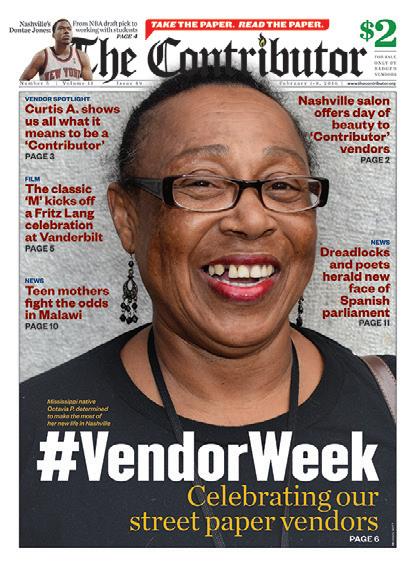
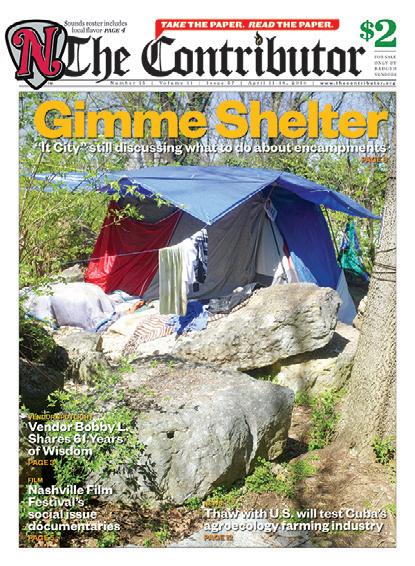


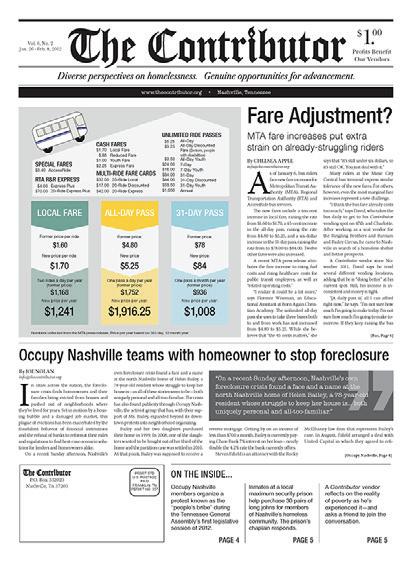


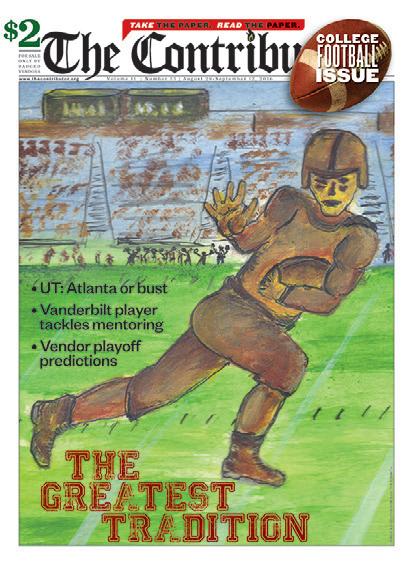


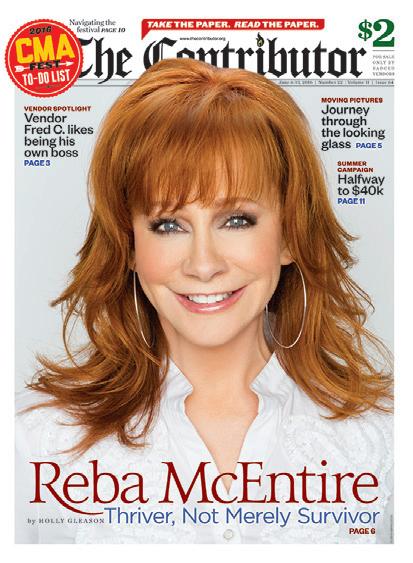






Research and campaigns by women’s rights advocates are beginning to focus on the problem of Latin American girls under the age of 14 who are forced to bear the children of their rapists, with the lifelong implications that entails and without the protection of public policies guaranteeing their human rights.

The Latin American and Caribbean Committee for the Defence of Women’s Rights (Cladem) addressed the issue of teenage girls who fell pregnant as a result of rape, in a 2016 study in 14 countries of the region, to remove the cloak of invisibility.
Julia Escalante, a Mexican lawyer and Cladem regional coordinator, said that it was the case of Paraguayan girl Mainunbuy (not her real name) that motivated them to delve deeper into the issue. The girl became pregnant in 2015 after she was raped by her stepfather and was not allowed to have an abortion.
Cladem and Equality Now turned to the
Inter-American Commission on Human Rights (IACHR) in May of that year, which urged the Paraguayan state to protect the Paraguayan girl’s life and rights. But that did not happen, and since then similar cases have arisen in the South American country, the last one in November.
“The case of Mainunbuy led us to ask what is happening in other countries of the region. We found a lack of policies to prevent pregnancy and childbearing among children, and to protect the rights of girls,” she said.
A study published this year by the United Nations Population Fund (UNFPA) reported that this is the second region in the world, after Sub-Saharan Africa, with the highest teenage pregnancy rate, with 66.5 births per thousand girls and adolescents, compared to a global rate of 46.
In addition, of the 7.3 million births to adolescents under the age of 18 that occur each year in the region, more than two million are to girls under the age of
15, and if the trend continues that figure will reach three million by 2030.
Cladem’s study of 14 countries, Child Mothers: Forced Child Pregnancy and Motherhood in Latin America and the Caribbean, underscores that according to the laws in this region, all births to girls under the age of 14 are legally the result of rape or statutory rape.
Organisations that defend women’s rights in the region say that a forced child pregnancy occurs when a girl under the age of 14 becomes pregnant without having sought or desired it and faces obstacles that keep her from having an abortion if she so wishes.
Cladem’s data on births to girls under 15 reveal that in 2015 there were 122 in Uruguay, 1,432 in Peru, 1,444 in El Salvador, 1,600 in Nicaragua, 2,787 in Argentina, 6,045 in Colombia, 10,277 in Mexico, 13,332 in Bolivia and 26,700 in Brazil.
This Lima-based regional network that is active in 15 countries is carry -
ing out the campaign “Child Pregnancy is Torture,” which has contributed to raising awareness about this silenced issue in the international community.
Escalante emphasizes the responsibility of governments, which it called upon to gather specific, broken-down statistics on pregnancies and childbirths to girls under 14 years of age.
It also called for prevention measures through comprehensive sex education with a gender perspective from early childhood onwards, the inclusion of such content in the media, and a halt to the sexualization of girls in the media.
At the same time, it demanded that States remove the normative, legal and cultural obstacles that prevent access to abortion for pregnant girls, and thus avoid irreparable damage to their physical and mental health.
The United Nations Children’s Fund (UNICEF) has been sounding the alert on the steady rise in teen pregnancy and motherhood in Latin America and the Caribbean.
In a 2014 report, it noted that 20 per cent of pregnancies to girls under the age of 18 involved girls under the age of 15 who had been raped.
Speaking to IPS, Olga Isaza of Colombia, Unicef’s deputy representative in Peru, first specified the figures for child motherhood in the country, which serves as an example of the phenomenon in the region.
She said that between 2011 and 2017, the public health system attended 14,325 births to girls under 15. In addition, in 2015 the National Registry of Identification and Civil Status registered 1,538 newborns to mothers between the ages of 11 and 14 years.
“In 71 per cent of the cases, the fathers of these newborns were older than 18, which confirms the sexual abuse underlying these pregnancies,” Isaza said.
The annual teen pregnancy rate in Peru is 13 per cent of all pregnancies — a percentage that rises as high as 30 per cent in Amazon jungle regions such as Loreto.

“The group of girls under 14 is the one that worries us most because there is a relationship of submission and power that leads to girls having children, girls whose rights to be protected against all forms of violence and to live according to their age and to grow up are violated,” said the U.N. official.
Isaza mentioned five policy recommendations to ensure the rights of adolescents
and young people presented in Peru by the United Nations agencies, led by UNICEF and UNFPA (the U.N. Population Fund), and which can be adopted in other countries.
For example, the design of comprehensive policy packages to address the development aspect of children under 14 and access to friendly health services at appro -
priate times of the day and with specially trained personnel, as well as comprehensive sex education and making such information available to the girls’ families.

“It is about the home and school being safe spaces for every child and adolescent, for them to have health, education, protection against all forms of violence, and participation in their communities,” Isaza said.
He added that priority should be given to the areas of greatest risk in each country and that, in order to be effective, these measures of comprehensive action by the State must be culturally appropriate, including personnel trained and qualified to provide quality services, and a sufficient budget to be implemented efficiently.
Isaza noted that 13 of the 17 Sustainable Development Goals (SDGs), which make up the Development Agenda 2030, are directly associated with children and adolescents, in order to reach that year with this generation in better conditions in terms of health, education, justice, protection and gender equality.
“And the only way to do that is to make the SDGs a commitment of the States and for each segment of society to assume its role and live up to it, to agree on a broad social consensus,” she stressed.
Courtesy of Inter Press Service / INSP.ngoSince 2009, more than 3,200 different vendors have purchased $2,300,000 worth of The Contributor and sold over 6 million copies, generating over $15,000,000 in legitimate income for themselves. With verified paper purchases, income can be extrapolated to apply for housing. As a result, over 70% of the vendors who have vended with us for six months or more have obtained housing.










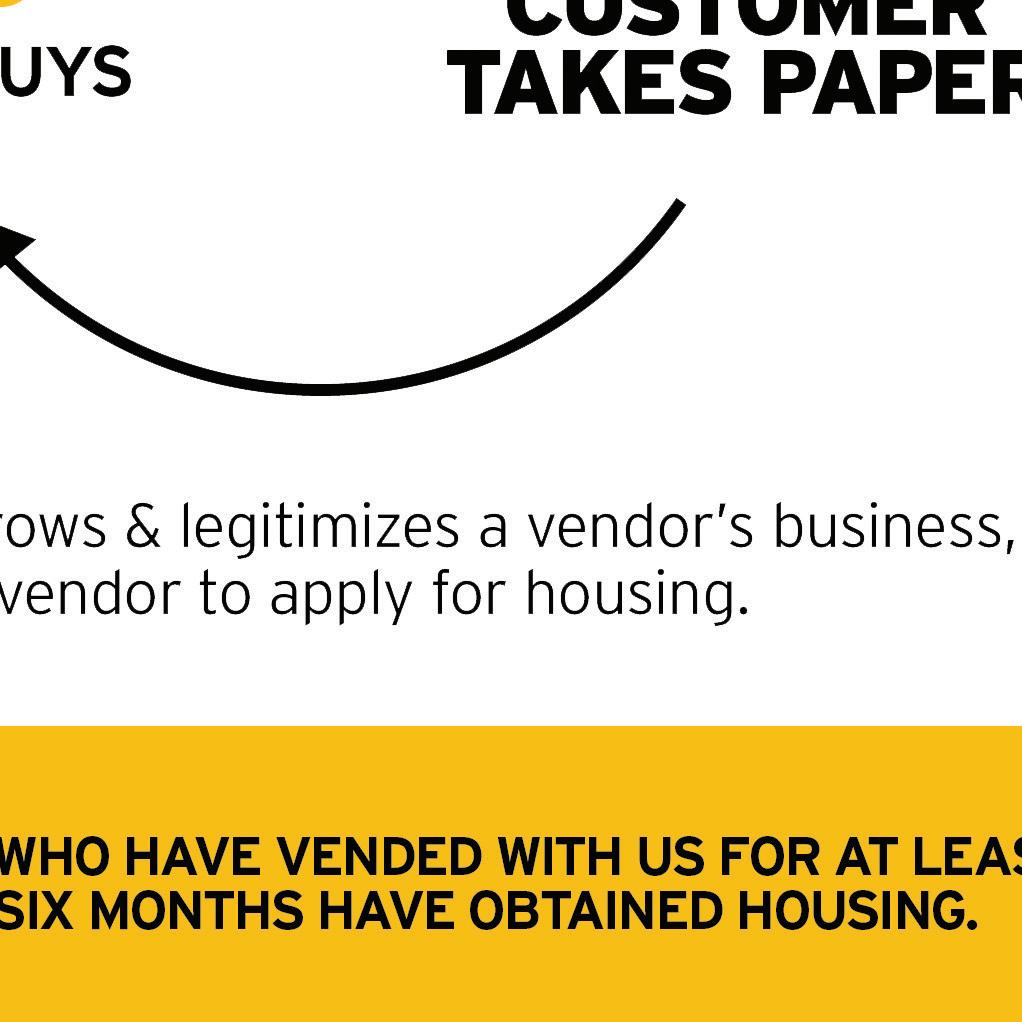


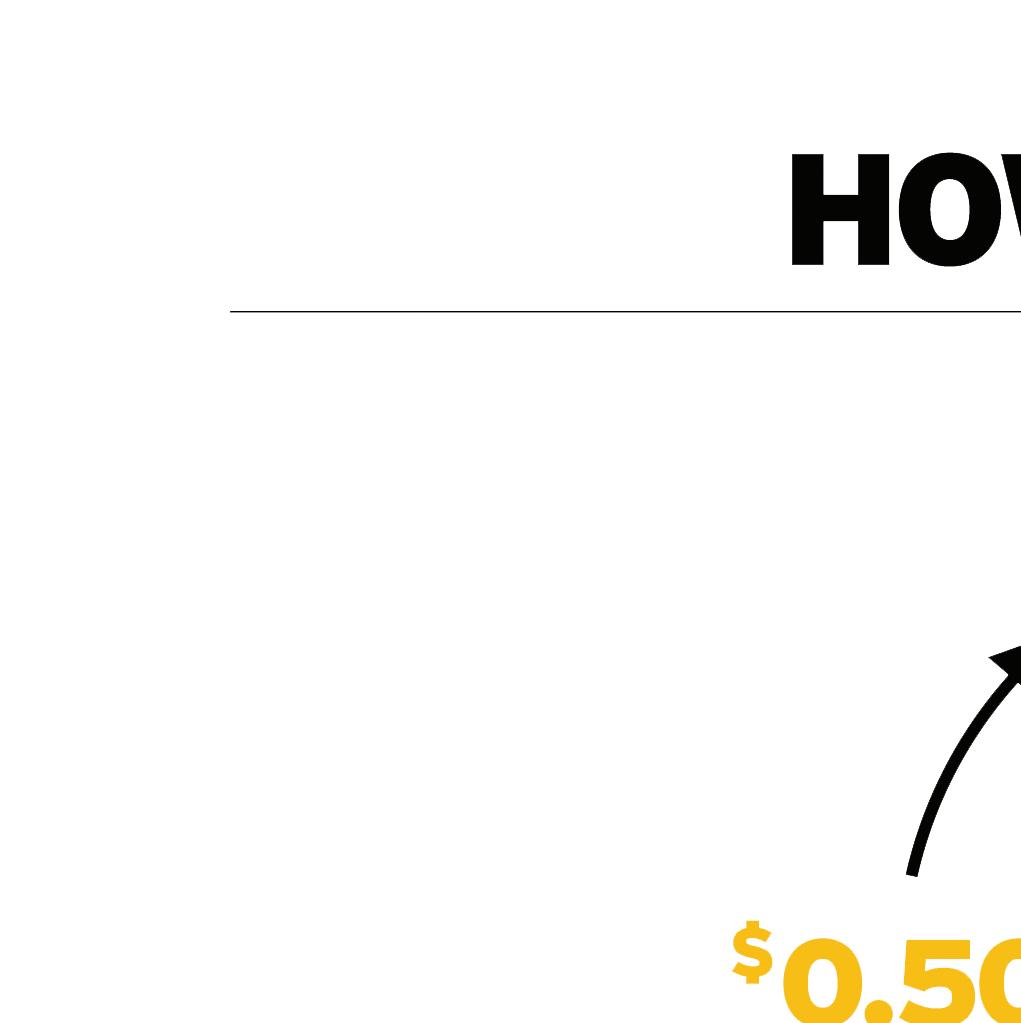
We are a unique non-profit in that dollars donated are 100% investments in our vendors’ businesses. Over the last 10 years, each dollar donated to us has become $6.22 in the pockets of our vendors! We are grateful for your support as we continue to provide economic opportunity with dignity to our vendors, making for a better quality of life for all Nashvillians.


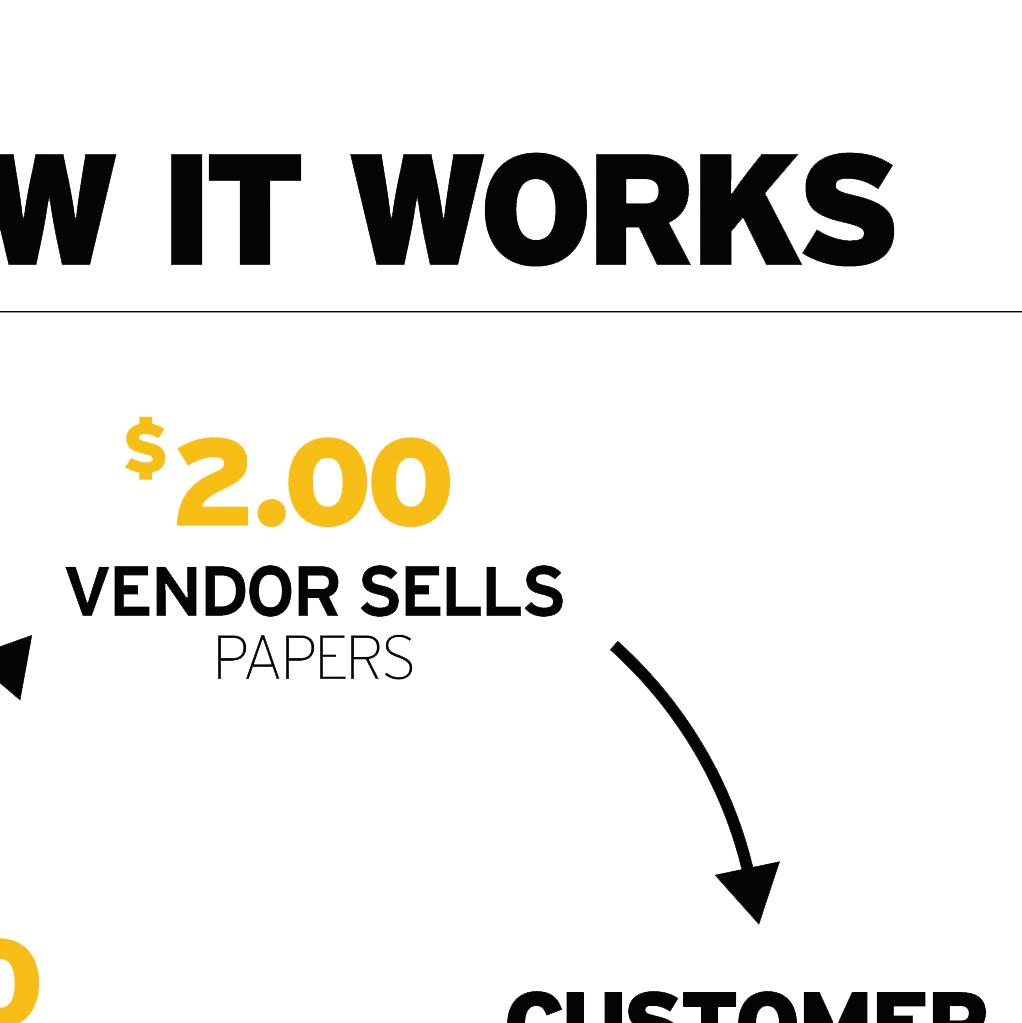
I walk into my first Contributor paper release meeting in over a year and recognize Dale immediately. He still has his signature mustache, his kind eyes and a warm smile that matches his sweet spirit.

Dale has been selling The Contributor for nearly eight years to his loyal customers in Franklin. We talk for about half an hour, and Dale lets me write it up for a vendor spotlight.
Well Dale, where should we jump in?
I just wish our customers would smile more. I mean everyone looks so… I can’t say broken, they just look depressed. And when they see you, they just look mad. All it takes is a smile and a wave. I don’t care if they roll the window down or not. Just smile and wave. Life’s too short and people need to smile more. They just look so miserable. And I wish more people would take the paper.
What’s in the paper for people?
I think they need to know more about homelessness and how people progress from sleeping under a bridge, a tree or a bush to how they’ve gotten out. Because
the newspaper has helped them get a place to live whether it be a trailer or a motel room at least they aren’t out in the elements.
If it wasn’t for this paper, I wouldn’t be able to do a lot of things that I can do. Even if I get a little help from social security—but not everybody gets that. My social security pays my bills, but if I have any extra things I need to do (like a car repair) if it wasn’t for The Contributor, I couldn’t do it.
What else do people need to understand?
I’m self employed. People don’t understand that. I just want people to understand that we’re not out there for our health or to grab money, we’re out there to make ourself dignified. We're trying to improve ourselves. Instead of always being depressed about not being able to do anything, this allows us to do things.
Some people come up and say, “You shouldn’t be out in this heat or this cold.”
They don’t understand that we have to be. For me to maintain living where I’m living, I do have to go out and sell these. It’s all I wish for people to un-
derstand, but a lot of time they don’t.
Can we talk a little about your experience being homeless and your transition to housing?
I had two jobs, two cars, a house and a wife, and I lost it all when the economy went down. I had one job for almost ten years. I started out at $7 an hour and it took me 10 years to get up to $10.75 an hour—I got a quarter raise a year. But then they started cutting back all of us older employees because we were making more money than they wanted to spend.
I did not like being homeless, and I could not understand it. I used to not make fun of homeless people, but I used to have the same thought, why can’t they just get a job. I never did drugs, but I did start drinking more because that’s what everyone else was doing.
If you don’t have an address, people won’t hire you. I can give you a tree and tell you what kind it is. Or a bush. That’s how I first got my food stamps. They asked for my address, and I said, “What bush
do you want me to tell you?” I told them I was sleeping outside so they went ahead and gave me my food stamps and I was able with that to sell them, get money saved up so I could buy a vehicle and stay in that.
Then I stayed in a motel for a while and mow I’ve been in a trailer for seven years.
How’d you find The Contributor ?
I was flying a sign in 100 Oaks, right up from Home Depot and I remember she had long, blonde hair and she said, “You need to try The Contributor.” So, I started going to all of these free meals, and that’s where I met my roommate and he started talking to me about selling the paper because he’s an old vendor. And I came and got started.
What kind of work were you doing before you became homeless?
Grocery store and flower shop.
What’s your favorite flower?
Calla lilies. They’re harder to work with but they are beautiful. You can do a lot of things with them.
An ice tray full of warm water will freeze faster than one full of cold water. I learned this in the sixth grade from Ms. Linsey–a flustered student-teacher who was trying to demonstrate how to use the scientific method. The freezing phenomenon is called the Mpemba effect, named for the Tanzanian student who published his ice-tray research in 1969. The strange thing is that the phenomenon is contrary to the laws of thermodynamics. Nobody really knows why the warm water freezes faster. From Aristotle to Descartes to Mpemba to Ms. Linsey, everybody has theories. But nobody has figured it out. So, Pisces, remember that in this age of smartphones, satellites, and nanotechnology, science still doesn’t understand what’s going on in your freezer. Why not ponder that over an ice-cold glass of lemonade?
In some traditions, fireworks are considered a good way of getting the attention of a god. They are a cry exploding into the heavens. “Look at me! Pay attention! I’m down here and I’m blowing stuff up!” It’s a bold move for a puny, finite being with a pack of Texas bottle-rockets. I can’t say whether it works or not, but I do like the idea that a good loud pop and a flash of sparkling light might get a second look from the divine. So, if you have the opportunity to set off some fireworks this month, I’d say go for it. But just in case somebody up there notices, maybe you should prepare a statement.
This month’s Taurus Hoboscope features vibrating bristles and a pivoting head that can rotate 360 degrees for maximum foretelling power! (If yours isn’t working, you probably broke it. Pick up another copy of this edition. It’s totally worth it!)
George Orwell is best known for his novels 1984 and Animal Farm, both of which explore the dangers of fascism and the inestimable importance of free speech. In a slightly less well-known work, Orwell took a bold stance on another danger facing Britain: that is, the epidemic of weak tea. In “A Nice Cup of Tea,” Orwell insisted, “One strong cup of tea is better than twenty weak ones.” At a time when tea was in short supply, Orwell insisted that each cup should be brewed to the highest standard, even if that meant drinking tea less frequently. Consider this, Gemini, as you choose where to put your energy on a given day. There is only so much to go around. You’re better off putting enough of yourself into a few cups than trying to put a little bit into so many.
OK, I’ve got one. Your house is on fire and you only have time to grab three things. (Let’s assume any people or animals you love are already at a safe distance.) What would you take? Would you go straight for the valuables like your collection of first-run limited-edition Pokemon cards? Or maybe something sentimental like that
picture your great-aunt painted of Don Rickles eating a corndog (or is that Dwight Eisenhower holding a microphone?). You might go for something super-practical like that box with your birth certificate, passport and old report cards in it. Make a list of your top three things. Now, imagine your life if those three things were gone. What would you do? How long would it take you to recover? Would you replace them, or just move on? It’s good to know what we’re holding onto the tightest and what we could maybe even live without.
Yikes! I think that watermelon vine just moved! No, wait, you’ve just got a snake in your garden. A startling revelation to be sure, but before you start jabbing at it with your trowel, maybe you need to take a closer look. Sure, there are a few bad ones out there, and it’s important to know when you’re dealing with somebody venomous, but most of the snakes you see around here range from harmless to beneficial. A good ratsnake in your garden will go after any fuzzies that might have their eyes on your tomatoes. If you’re lucky enough to get a kingsnake, he’ll take care of pest-control and even keep the poisonous snakes out of your yard. The same can be said for other “snakes” in your life. Be sure you know just what kind you’re dealing with before you jump to conclusions.

The pay is good and the benefits package isn’t too shabby. The hours could be worse and there’s that two weeks of vacation time you still haven’t used. But somehow it doesn’t all seem worth the crushing sense of dread you experience every morning as you pull into your parking space. Every day you hope that the building will be closed for asbestos removal or that your boss will be lost in Sri Lanka with anti-malarial-induced amnesia; anything so that you could just turn around and go back home. Dissatisfaction is a sign that you might be ready to make a change. My only advice on the matter is that you make a plan first and stick to it. Don’t jump ship until you’re sure you know how to swim.
I can’t believe how much you have to get done this week, Libra! And I can’t believe you’re just out in the backyard pulling weeds again! Look, friend, productive procrastination can be a beautiful and worthwhile sport, but eventually you’re really going to have to come back inside and hunker down. And so, I would like to direct you — ever so gently — that this is a great time to get back on course.
A good amateur astrologer is like a good mechanic. You don’t want a mechanic that gives you a list of 65 things that are wrong with your car in no particular order and tells you that if you don’t fix them all (for one non-itemized flat-rate) you’ll end up
crying in a ditch. You want a mechanic who can prioritize. Fix the breaks first. Worry about the missing stereo volume knob later. So, Scorpio, I have to let you know that while your future looks promising, there are a couple of major repairs you ought to take care of before you get back on the road. Luckily, you know just what they are. Give the big problems some attention this week. Leave the small stuff for another 10,000 miles.
All your summer gigs are booked. The plans are made. The flights are all reserved with window seats and everything. It’s hard to remember when it all started, but it all seems to be pushing forward with or without you. So what if, somewhere down deep, your gut says this isn’t the right time. This isn’t the season for the big tour. There isn’t really enough money and there isn’t really enough time and this wasn’t really the plan in the first place. Don’t be afraid to take a step back. You may find that your stomach is just churning with a mixture of excitement and uncertainty. Go with the flow and let the plans take you away. Or it may really be time to put on the brakes. Don’t be afraid to reconsider.
Do you remember Bandura’s Bobos? No, they weren’t the band you saw open for The Spin Doctors in ‘91. You probably learned about them in your college psychology class. Allow me to refresh. There was this psychologist, Albert Bandura, and he did these experiments where he would take these three-foottall punching-bag clown-dolls called “Bobos” and put them in rooms with kids to see if certain conditions would make the kids act aggressively toward the Bobos or be nice to them. It was all about how society makes us act violently or politely based on what we see or experience. You remember, right? But I was just thinking about how sometimes, Capricorn, you’re pretty hard on yourself. You tend to kind of beat yourself up. And I was thinking about those Bobo clown-dolls and how you can punch them and they bounce straight back. And I can see why you thought you could be so mean to yourself and expect to just pop right back into place. But you can’t. You need to take it easy on your inner-Bobo.
Man, Aquarius, it’s so hot out there you could fry an egg on the sidewalk! But despite the seeming convenience of cooking breakfast in the public right-of-way, there are probably better ways to fry an egg. Maybe a nice skillet on a stovetop would do the trick. Or go for one of those big flat commercial griddles. That way you could cook up a couple of strips of bacon and maybe some pancakes at the same time and you wouldn’t have to worry about getting dirt or rocks or pieces of old gum in your breakfast like you do when you cook it on the sidewalk. Just a general reminder that while there may be a lot of ways to get the job done, using the right tools tends to yield a better result with fewer complications.

